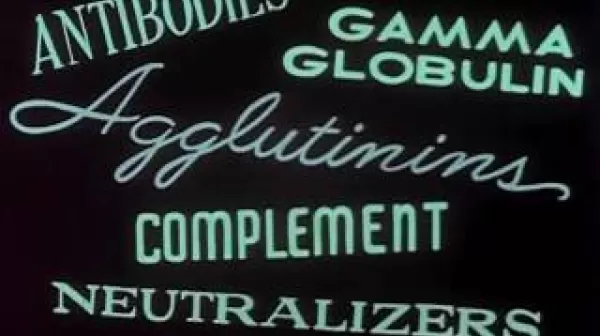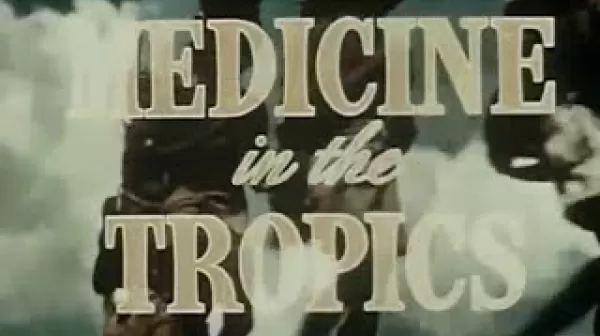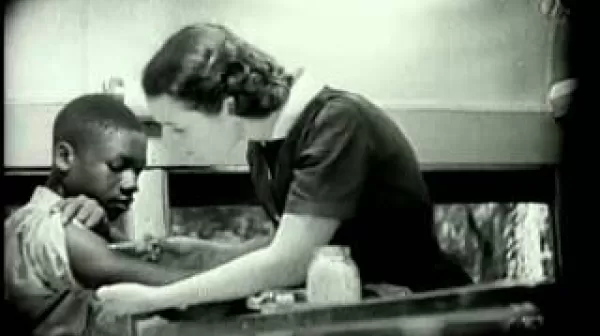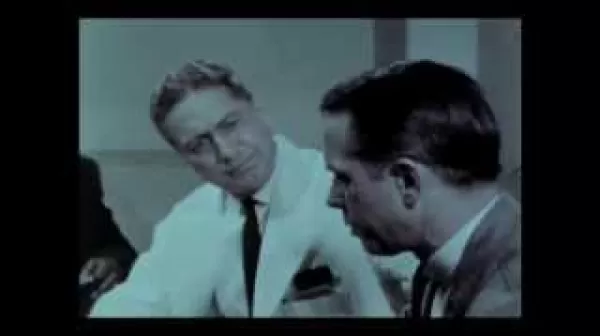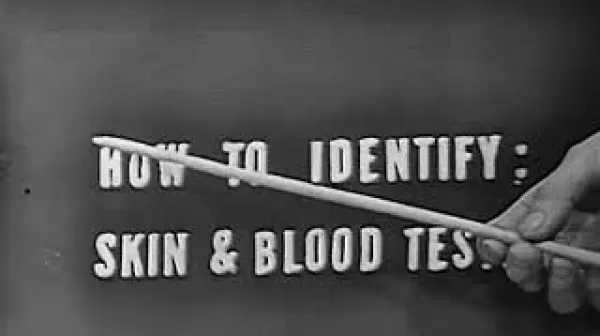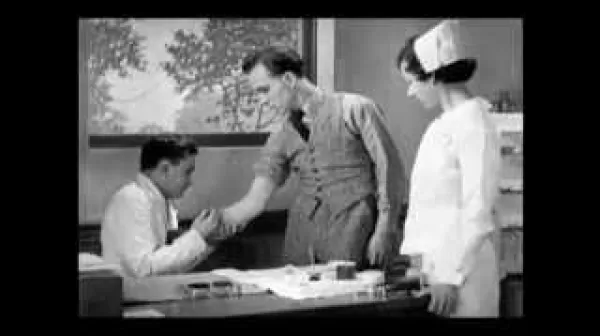Target TB (National Tuberculosis Association, 1950)
This film was produced to encourage Americans to get chest x-rays. The narrator first introduces a TB germ, which is personified as a weapon-wielding cartoon attacking people ages 15-45. The narrator then explains that TB kills one American every 9 minutes, which is more lives lost than soldiers at war. He then says that the disease is preventable, and a series of concerned citizens ask why it is not cured.


